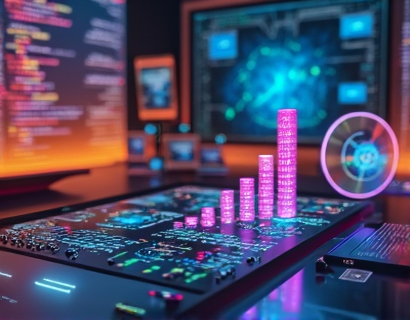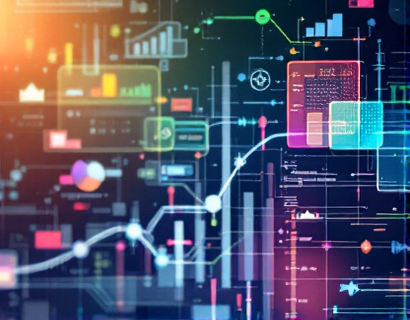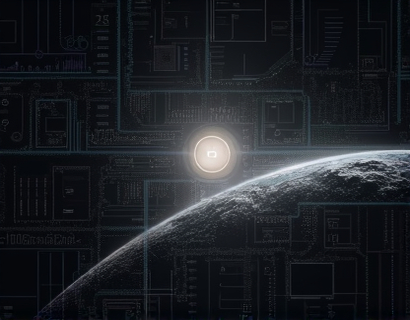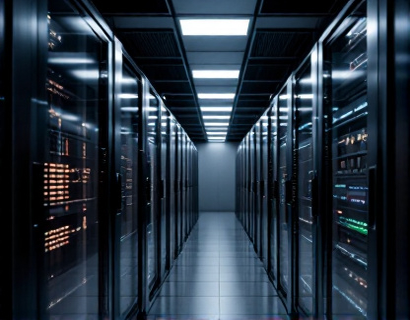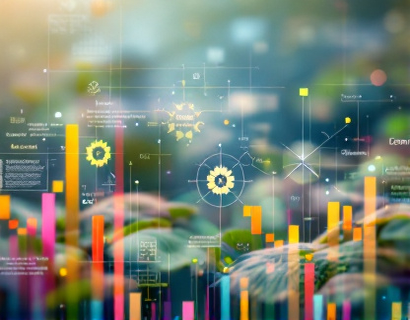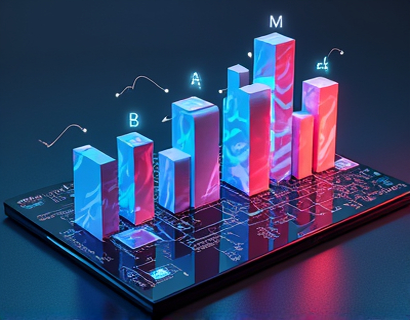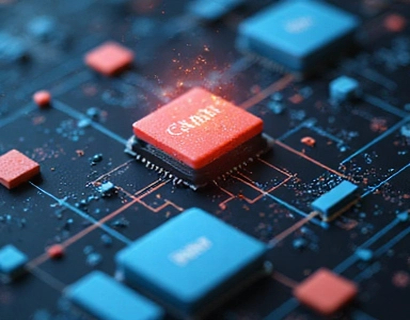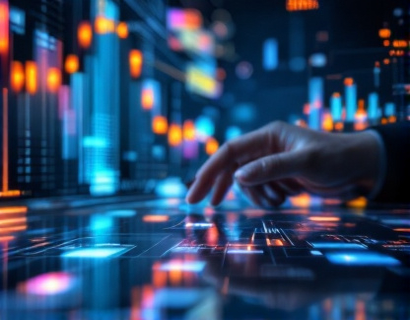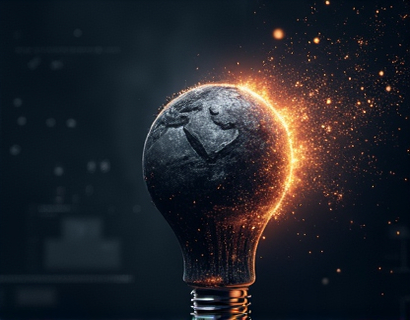Decentralized Productivity 5.0: Harnessing AI and Crypto for Next-Gen App Ecosystems
The advent of decentralized technology, coupled with the rapid advancements in artificial intelligence and cryptocurrency, is ushering in a new era of productivity tools and app ecosystems. This transformation, often referred to as Decentralized Productivity 5.0, promises to redefine how we interact with digital solutions, making them more efficient, secure, and user-centric. This article delves into the synergy between AI and crypto, exploring how these technologies, when integrated into app ecosystems, can unlock seamless and efficient digital experiences.
The traditional centralized model of software and app development has been dominated by a few large corporations, leading to bottlenecks in innovation and user control. Decentralized Productivity 5.0 challenges this status quo by distributing control and data across a network of nodes, eliminating single points of failure and enhancing security. This decentralized approach, when combined with AI and crypto, creates a powerful framework for building next-generation applications that are not only more robust but also more responsive to user needs.
Enhancing User Experience through Decentralization
One of the most significant advantages of Decentralized Productivity 5.0 is the enhancement of user experience. In a decentralized system, users have greater control over their data and applications. This control translates into a more personalized and secure experience. For instance, users can manage their own identities and data permissions, reducing the risk of data breaches and unauthorized access. The decentralized nature of these systems also means that applications can operate without intermediaries, leading to faster load times and improved performance.
Moreover, decentralized platforms can leverage blockchain technology to create transparent and tamper-proof records of user interactions and data transactions. This transparency builds trust between users and service providers, fostering a more collaborative and community-driven environment. In traditional centralized systems, users often have to trust a single entity with their data, which can be a significant barrier to adoption. Decentralization removes this trust issue, making it easier for users to embrace new technologies and services.
AI and Crypto: A Powerful Synergy
The integration of AI and cryptocurrency in decentralized app ecosystems creates a synergy that amplifies the benefits of both technologies. AI can process and analyze vast amounts of data to provide insights and automate tasks, while cryptocurrency ensures secure and transparent transactions. This combination enables the development of smart contracts that can execute complex operations automatically, based on predefined conditions. Such smart contracts are the backbone of decentralized applications (dApps), which can range from financial services to supply chain management and beyond.
AI-driven analytics can also enhance the functionality of crypto-based applications. For example, machine learning algorithms can predict market trends, optimize resource allocation, and personalize user experiences in decentralized finance (DeFi) platforms. These AI-powered features not only improve the efficiency of crypto applications but also make them more accessible and user-friendly. Users can benefit from intelligent recommendations and automated processes, reducing the learning curve associated with complex crypto systems.
Streamlining Tasks with Decentralized Tools
Decentralized Productivity 5.0 offers a suite of tools that can streamline various tasks, from project management to content creation. Decentralized project management platforms, for instance, allow teams to collaborate without the need for centralized servers. These platforms use blockchain to ensure that all project data is immutable and accessible to authorized team members. This setup not only enhances collaboration but also provides a clear and transparent record of project progress and decision-making.
Content creation tools are another area where decentralized technology shines. Decentralized content platforms enable creators to publish and monetize their work directly, without intermediaries. Blockchain-based royalties ensure that creators receive fair compensation for their work, while AI can assist in content curation and distribution. This combination of decentralization and AI ensures that high-quality content reaches the right audience, fostering a more vibrant and diverse digital ecosystem.
Revolutionizing Digital Workflows
The integration of AI and crypto in decentralized app ecosystems can revolutionize digital workflows across various industries. In the business sector, decentralized workflows can optimize supply chain management by providing real-time tracking and verification of transactions. Smart contracts can automate payment processes and ensure compliance with contractual obligations, reducing the need for intermediaries and lowering transaction costs. This not only speeds up operations but also increases transparency and trust among business partners.
In the creative industries, decentralized platforms can transform how artists and designers collaborate and monetize their work. Blockchain-based portfolios and portfolios can securely store and verify the ownership of digital assets, such as artwork and music. AI can assist in generating new creative ideas, enhancing the design process, and even creating unique pieces of art. This fusion of technologies empowers creators to focus more on their craft, while the underlying infrastructure handles the logistics and monetization.
Security and Privacy in Decentralized Systems
Security and privacy are paramount in any digital system, and decentralized Productivity 5.0 addresses these concerns through robust cryptographic techniques and decentralized consensus mechanisms. Blockchain technology ensures that data is encrypted and distributed across multiple nodes, making it extremely difficult for malicious actors to alter or steal information. Additionally, decentralized systems often employ zero-knowledge proofs and other privacy-preserving techniques to protect user data while maintaining the integrity of the network.
AI plays a crucial role in enhancing security by detecting and mitigating threats in real-time. Machine learning algorithms can analyze network traffic and user behavior to identify anomalies and potential security breaches. This proactive approach to security ensures that decentralized applications remain safe and reliable, even as they scale to accommodate a growing number of users and transactions.
Challenges and Future Prospects
Despite its promising potential, Decentralized Productivity 5.0 faces several challenges that need to be addressed for widespread adoption. One of the primary challenges is scalability. Current blockchain technologies often struggle to handle a high volume of transactions, which can limit the performance of decentralized applications. However, ongoing research and development in areas such as sharding and layer 2 solutions are aimed at addressing these scalability issues.
Another challenge is the user adoption curve. Decentralized systems can be complex and require a certain level of technical understanding, which may deter casual users. Educational initiatives and user-friendly interfaces are essential to bridge this gap and make decentralized technologies more accessible to a broader audience. As the ecosystem matures, we can expect to see more intuitive and user-centric designs that lower the barrier to entry.
The future of Decentralized Productivity 5.0 is bright, with continuous innovation and collaboration between developers, researchers, and users. The integration of AI and crypto will continue to drive advancements in app ecosystems, leading to more intelligent, secure, and user-driven digital solutions. As more organizations and individuals recognize the benefits of decentralization, we can anticipate a significant shift towards a more open and equitable digital landscape.
In conclusion, Decentralized Productivity 5.0 represents a transformative shift in how we build and interact with digital applications. By harnessing the power of AI and cryptocurrency, this approach not only enhances user experience and workflow efficiency but also fosters a more secure and transparent digital environment. As the technology evolves, it has the potential to redefine the future of app ecosystems, paving the way for a more decentralized and empowering digital world.




